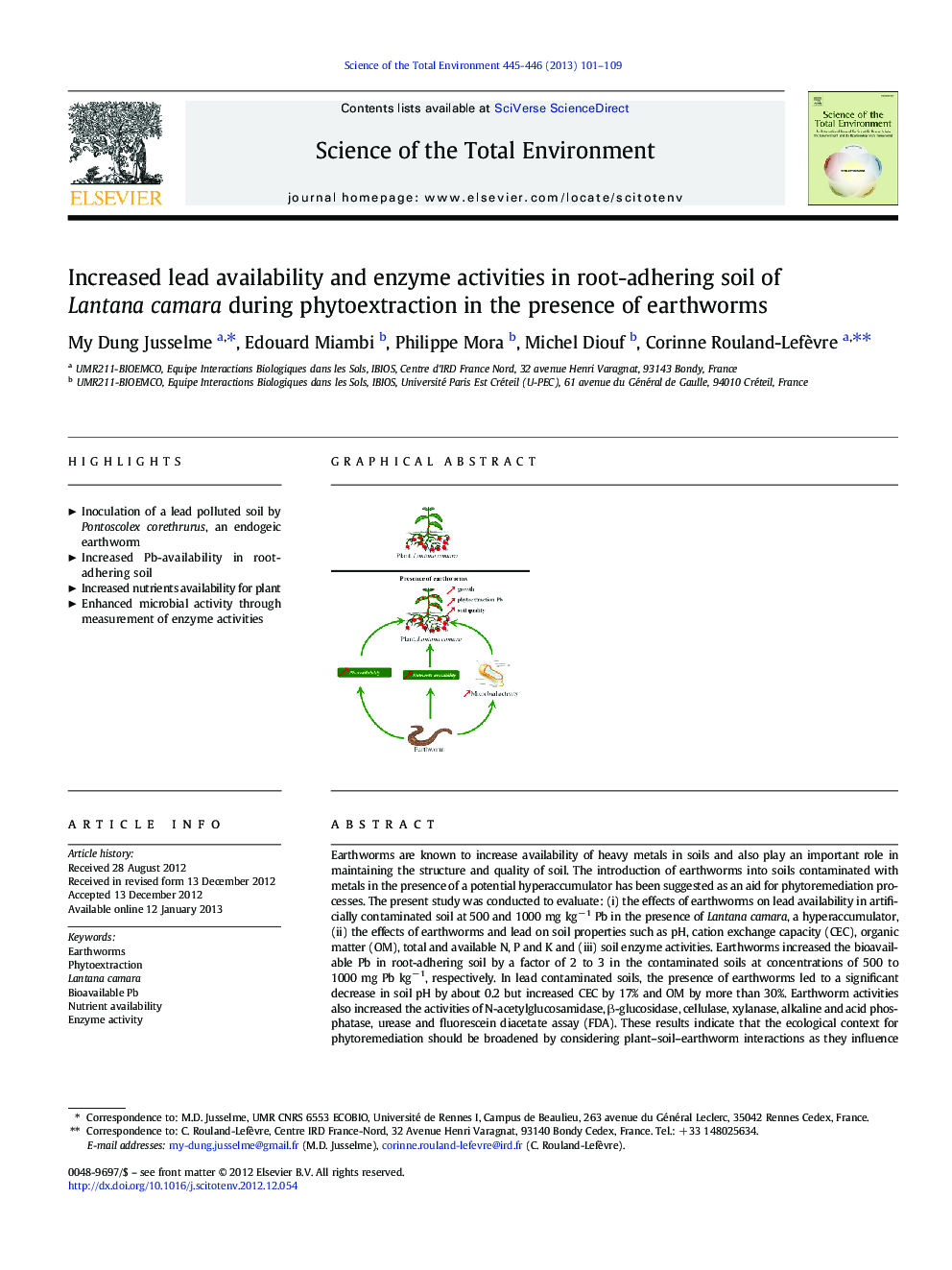| Article ID | Journal | Published Year | Pages | File Type |
|---|---|---|---|---|
| 4428932 | Science of The Total Environment | 2013 | 9 Pages |
Earthworms are known to increase availability of heavy metals in soils and also play an important role in maintaining the structure and quality of soil. The introduction of earthworms into soils contaminated with metals in the presence of a potential hyperaccumulator has been suggested as an aid for phytoremediation processes. The present study was conducted to evaluate: (i) the effects of earthworms on lead availability in artificially contaminated soil at 500 and 1000 mg kg− 1 Pb in the presence of Lantana camara, a hyperaccumulator, (ii) the effects of earthworms and lead on soil properties such as pH, cation exchange capacity (CEC), organic matter (OM), total and available N, P and K and (iii) soil enzyme activities. Earthworms increased the bioavailable Pb in root-adhering soil by a factor of 2 to 3 in the contaminated soils at concentrations of 500 to 1000 mg Pb kg− 1, respectively. In lead contaminated soils, the presence of earthworms led to a significant decrease in soil pH by about 0.2 but increased CEC by 17% and OM by more than 30%. Earthworm activities also increased the activities of N-acetylglucosamidase, β-glucosidase, cellulase, xylanase, alkaline and acid phosphatase, urease and fluorescein diacetate assay (FDA). These results indicate that the ecological context for phytoremediation should be broadened by considering plant–soil–earthworm interactions as they influence both plant health and absorption of heavy metals. They also showed that the enzyme activities monitored could serve as useful proxies for phytoremediation capability and, more generally, for soil quality as a whole.
Graphical abstractFigure optionsDownload full-size imageDownload as PowerPoint slideHighlights► Inoculation of a lead polluted soil by Pontoscolex corethrurus, an endogeic earthworm ► Increased Pb-availability in root-adhering soil ► Increased nutrients availability for plant ► Enhanced microbial activity through measurement of enzyme activities
